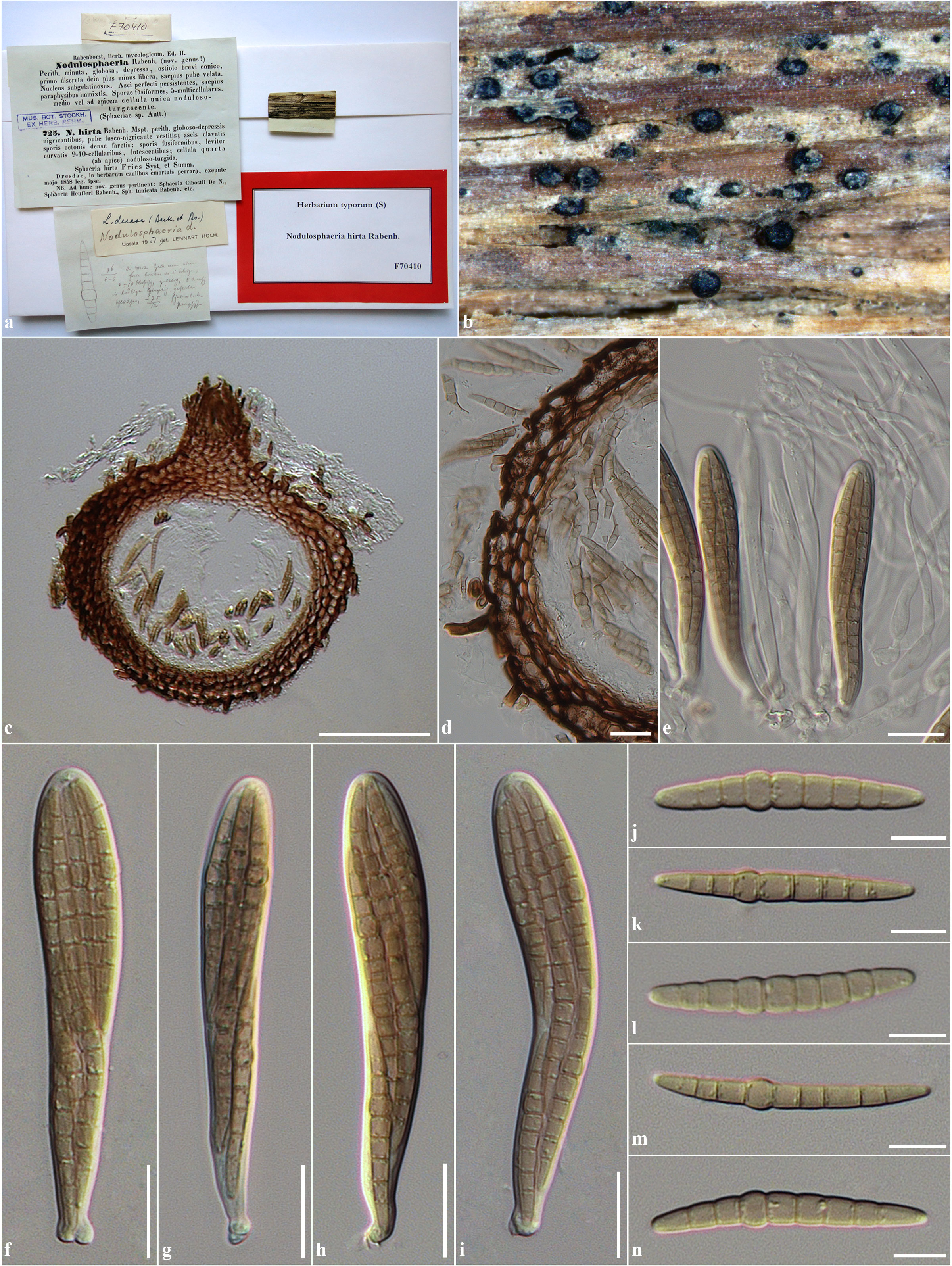Nodulosphaeria hirta Rabenh., Klotzschii Herb. Viv. Mycol., Edn 2: no. 725 (in sched.) (1858)
Saprobic on herbaceous dicotyledons. Sexual state: Ascomata 230–380μm high (including papilla), 225–395μm
diam., scattered, solitary to gregarious, semi-immersed, or erumpent through host epidermis at maturity, visible as black dots on host surface, uniloculate, globose to subglobose, setose, covered by hyphae, dark brown to black, ostiole central, papillate, with broad setae in ostiolar canal, towards the apex. Peridium 21–44μm wide, thin, of equal thickness, composed of several layers of brown to dark brown, pseudoparenchymatous cells, outer layer comprising 1–2 layers of brown to dark brown, thickened cells, arranged in textura angularis to textura globulosa, inner layers comprised 2–3 layers of brown to dark brown, flattened cells, arranged in textura angularis. Hamathecium composed of numerous, 3–5μm wide, filamentous, broad cellular pseudoparaphyses, with distinct septa, embedded in mucilaginous matrix, anastomosing at the apex. Asci (83–)90–110(−115)×(13.5–)15–20μm (x = 100×16.8μm, n=25), 8-spored, bitunicate, fissitunicate, clavate to cylindric-clavate, subsessile or short pedicellate, apically rounded with well-developed ocular chamber. Ascospores 48–55×5–7(−7.5) μm (x = 51.2× 6.5μm, n=30), overlapping 3–4-seriate, phragmosporous, cylindrical or elongated fusiform, with narrow ends, brown to yellowish-brown, 8-septate, slightly curved, smooth-walled, enlarged at the forth cell from the apex. Asexual state: Unknown.
Material examined: GERMANY, Sachsen, Dresdae, on dead stems, May 1858, G.L. Rabenhorst (S-F70410, type).
Fig. 1 Nodulosphaeria hirta (S-F70410, type). a Herbarium label and specimen of Nodulosphaeria hirta. b Ascostromata on host surface. c Section through ascostroma. d Section through peridium. e Asci with cellular pseudoparaphyses. f–i Asci. j–n Ascospores. Scale bars: c= 100μm, d, e, f, g, h, i=20μm, j, k, l, m, n=10μm

